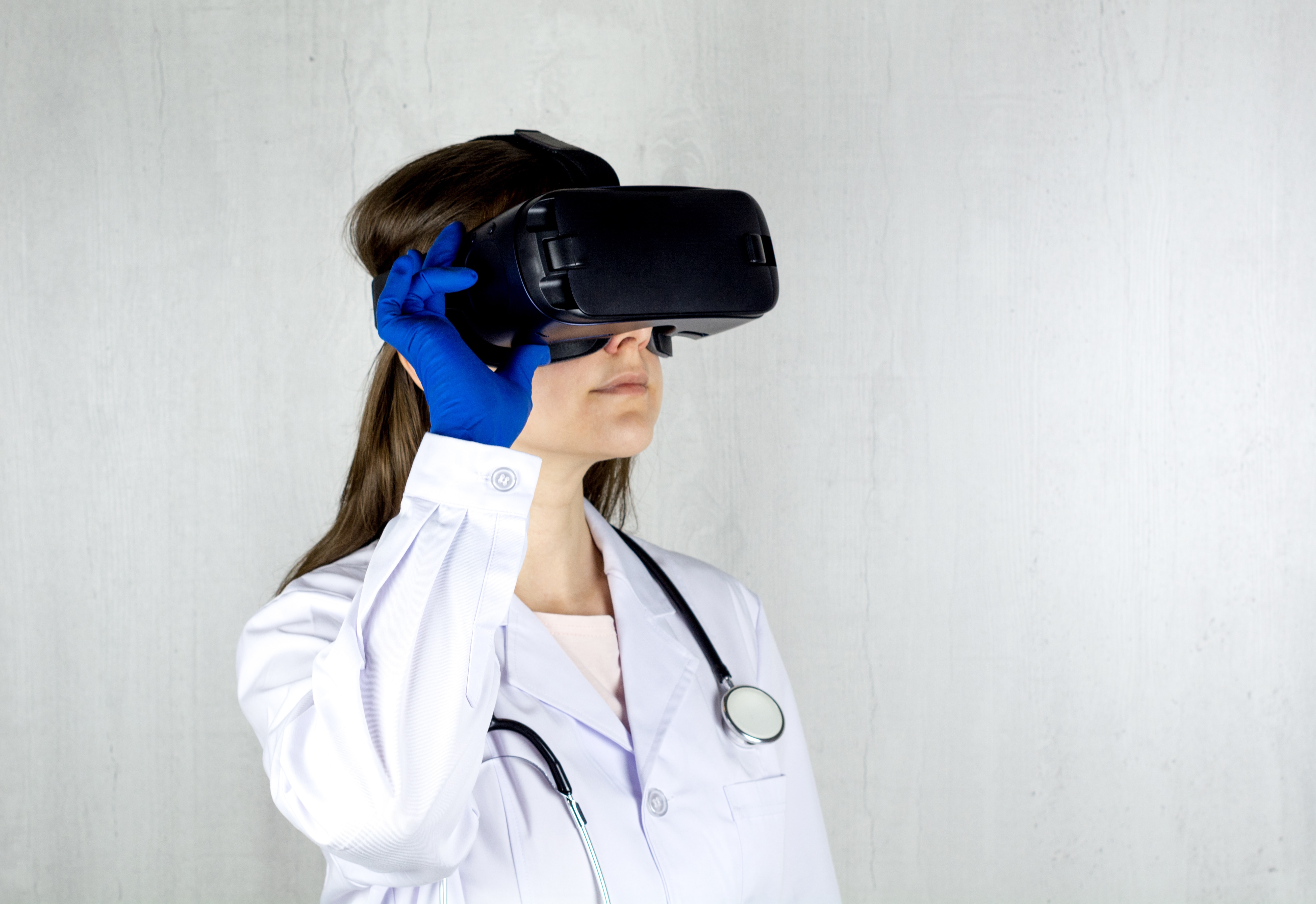Virtual Reality in Healthcare
—

We know what you might be thinking: “Virtual Reality in healthcare? Sure, that’s a great way to entertain recovering patients.” You are not wrong, but that is not really where we were coming from. Here we are talking about medical VR and how it helps transforms patients' recoveries and how doctors work.
The technology has not just moved the imagination of science-fiction fans and video gamers but also clinical researchers and real-life medical practitioners. Although its use is not widespread yet in the sector, VR holds great potential, and the covid-19 pandemic has accelerated its adoption to levels nobody could have predicted.
Training doctors to use virtual reality
Operating Theatres will soon look different thanks to VR. Additionally, medical students will no longer need to physically dissect animals or cadavers – this will all be digital. VR will also enable them to experience situations which would otherwise be impossible in their training. This can then apply to other professions where training for some scenarios would otherwise be impossible due to the risks and ethics involved.
The technology is currently being used to train new surgeons and improve current practitioners’ skills. During their time in medical school and residency, surgeons often lack adequate opportunities to regularly practise the skills they are learning, especially those that are related to new medical technologies. When training on a new device, they’re often required to travel from one training workshop (provided by the medical device company) to another, a one-time training experience which generally does not offer the chance to continue reinforcing their practical skills. Virtual-reality-based training systems offer a solution to this problem by providing immersive, hands-on training that closely simulates an operating room environment. VR platforms offer on-demand training that can be used anytime, anywhere. This results in serious improvement in performance as highlighted in a recent study from Harvard Business Review showing that VR-trained surgeons had a 230% boost in their overall performance compared to their traditionally trained counterparts. The formers were also faster and more accurate in performing surgical procedures.
Rehabilitation through VR
Another example of VR adoption in healthcare is high-tech 3D motion tracking sensors which can work in combination with a smartphone app for pre- and post-operative VR rehabilitation. This technology is already being used by the NHS in the first weeks of rehabilitation after knee, hip and spine surgery. The app not only guides the patient's whole physiotherapy session, but also tracks their progress to help physiotherapists gain a better understanding of the day-to-day movement restrictions their patients experience. It then allows the physiotherapist to make real-time adaptations to their patient’s VR physiotherapy programmes.
For patients who have suffered a stroke or other brain injury, time is of the essence. The earlier they start rehabilitation, the better their chances are to regain lost functions. In this setting, VR and treatment can be used together to help plan personalised physiotherapy programmes that patients can follow at home. The use of VR here aims to make the therapy more enjoyable and immersive whilst being quick to deploy for both patient and doctor.
Combatting anxiety using virtual reality
VR technology can also be used in simple yet very effective matters, such as calming patients during their stay in hospital or whilst participating in an unpleasant procedure such as childbirth. Since most of us are already guilty of browsing our phones every day in order to escape reality via a mobile game or a scenic landscape from our friends’ holidays picture on social media, we might as well embrace the idea of ‘running from reality’ whilst in hospital in order to take us away from a distressing procedure.
Patients can even treat their anxiety disorders, specific phobias, or post-traumatic stress disorder with the help of VR. The participant is under the control of professional physicians and has autonomy over getting out of the simulation at any time.
Medical VR adoption and future
As VR technology becomes more affordable, its adoption will be more widespread, and more immersive technologies will appear in all aspects of our lives including healthcare and well-being.
The Covid-19 pandemic has certainly accelerated the adoption of VR technology in healthcare from training new staff members remotely, to teaching medical residents in virtual laboratories and helping patients get their treatment safely from the comfort of their home.
With a strained medical-education system, rapid medical innovation and a pending healthcare provider shortage, virtual reality offers an important educational tool to augment medical training and continue to offer patients the very best care. As long as human imagination - which creates virtual worlds and scenarios is limitless – virtual reality adoption in healthcare will have no boundaries. One thing is for sure; healthcare is the industry where VR adoption can benefit humankind the most.
